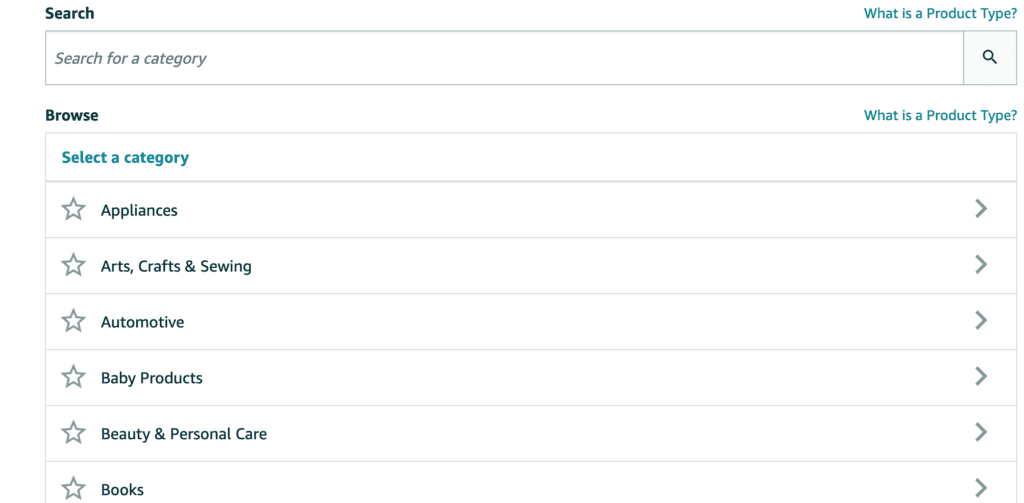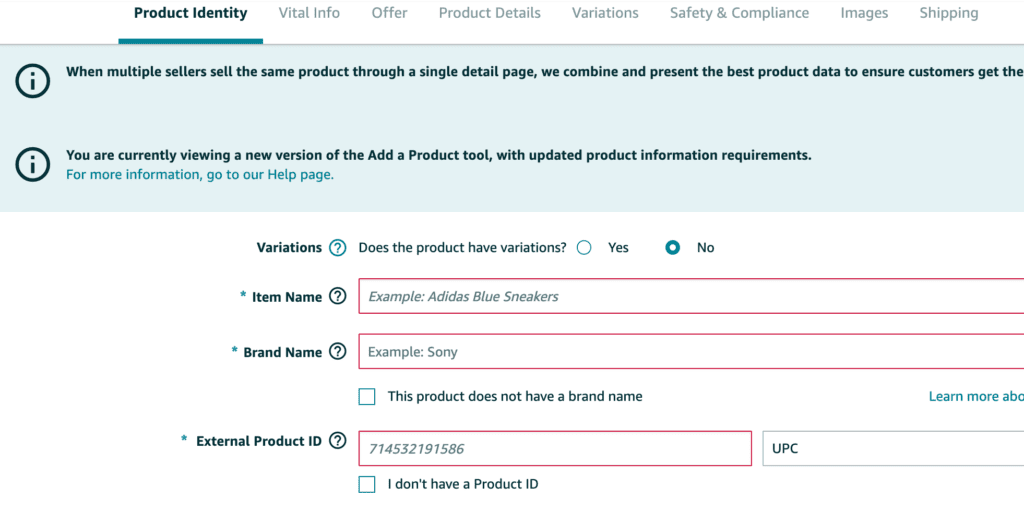Buy Instant UPC Codes for Amazon
Get GS1-compliant UPC codes in minutes. Start selling on Amazon today!
Buy Amazon UPCs Now - $10✓ 100% Amazon Compatible Guarantee
All our UPC codes are from GS1 and fully compliant with Amazon's requirements. Used by thousands of successful sellers.
Years helping Amazon sellers
Successful listings created
GS1 compliant codes
Delivery after purchase
Ready to Start Selling?
Buy Amazon UPCs Now - $10Why Do You Need UPC Codes for Amazon?
All new product listings on Amazon require a unique UPC code for identification and inventory tracking
Product Identification
Amazon uses UPC codes to identify products in their database. Each unique item needs its own UPC - different colors, sizes, or variations each need separate codes.
Prevent Counterfeits
UPC codes help Amazon prevent duplicate listings and counterfeit items, maintaining the integrity of their marketplace.
Inventory Tracking
UPCs serve an important role in maintaining and tracking inventory across millions of products on Amazon's platform.
100% GS1 Compliant
All our codes are from GS1 and fully compliant with Amazon's requirements. Guaranteed to work for your listings.
What are UPC Barcodes?
Understanding the different codes and identifiers used on Amazon
UPC
Universal Product Code - a unique 12-digit identifier for physical products. The first 5 digits are called the prefix.
Barcode
Digital representation of a UPC or EAN code, consisting of scannable bars and the corresponding UPC number underneath.
GTIN
Global Trade Item Number - the umbrella term for UPC, EAN, and other product identifiers. Same as UPC for most purposes.
FNSKU
Fulfillment Network Stock Keeping Unit - Amazon's internal tracking code for specific products (used vs new, different sellers).
ASIN
Amazon Standard Identification Number - 10-character code Amazon uses internally, found at the end of product URLs.
EAN
European Article Number - 13-digit code used primarily for European markets, similar to UPC but with an extra digit.
How to List Your Product on Amazon
Follow these simple steps to get your product live on Amazon
Purchase UPC Code
Buy your UPC code instantly for $10. Receive it immediately via email.
Access Amazon Seller
Log into your Amazon Seller Central account and navigate to "Add a Product".
Enter Product Details
Fill in your product information and paste your UPC code in the "External Product ID" field.
Go Live
Submit your listing and start selling! Your product will be live within 15 minutes.
Step-by-Step Amazon Listing Guide
1. Navigate to Add a Product
In your Amazon Seller Central, click the Catalog tab, then Add a Product. Scroll down and click "I'm adding a product not sold on Amazon".

2. Select Your Product Category
Choose the appropriate category for your product. You can either search for a category or browse through the available options.

3. Enter Your UPC Code
In the Product Identity tab, find the "External Product ID" field. Paste your UPC code here and select "UPC" from the dropdown menu.

Choose Your Package
No hidden fees, no renewals required - use your codes forever
Single UPC
Perfect for testing or single products
- ✓ 1 UPC Code
- ✓ Instant delivery
- ✓ GS1 compliant
- ✓ No renewal fees
- ✓ Expert support
Business Pack
$1.40 per code - Save $430!
- ✓ 50 UPC Codes
- ✓ Instant delivery
- ✓ GS1 compliant
- ✓ No renewal fees
- ✓ Priority support
- ✓ Bulk discount applied
Enterprise Pack
$0.90 per code - Save $910!
- ✓ 100 UPC Codes
- ✓ Instant delivery
- ✓ GS1 compliant
- ✓ No renewal fees
- ✓ Dedicated support
- ✓ Maximum bulk discount
Need more than 100 UPC codes?
View All Packages & Bulk PricingFrequently Asked Questions
Common Amazon Errors & Solutions
If you encounter issues when listing, here are the most common problems and how to resolve them
Using Incorrect Codes
Error: "Invalid codes" or "codes not matching"
Solution: Ensure you're entering the UPC in the correct field and selecting "UPC" from the dropdown. Read detailed guide →
SKU Mismatch
Error: "SKU does not match any ASIN"
Solution: Check that all required fields are completed correctly and product info matches your intended listing. Read detailed guide →
Brand Associated Error
Error: Brand not matching ASIN
Solution: Ensure your brand name matches exactly, or consider brand registry if you own the brand. Read detailed guide →
SKU Data Mismatch
Error: "SKU data different from catalog"
Solution: Product may already exist in Amazon's catalog. Check if listing already exists or adjust product details. Read detailed guide →
GS1 Prefix Information
Question: "Different company shows in GS1 database"
Explanation: This is normal - our codes come from GS1 but under our company prefix. Your codes are still 100% valid. Read detailed explanation →
Need Help?
Send us the exact error message
If you encounter any issues, send us a screenshot of the error. Avoid relying solely on Amazon support - we have 15 years of experience resolving these specific issues. Contact our support team →
Important Note About Amazon Errors
Most errors stem from branding issues or incorrect entry of the Product ID, not from invalid UPC codes. Amazon frequently sends template replies that may not address the actual problem.
Our advice: Follow our detailed guides above, and if issues persist, contact us with the exact error message for personalized help.
Ready to Start Selling on Amazon?
Join thousands of successful sellers who trust our UPC codes
Buy Your UPC Code NowQuestions? Contact our support team | Visit Help Center
How useful was this page?
Click on a star to rate it!
Average rating 4.9 / 5. Vote count: 1940
No votes so far! Be the first to rate this post.
